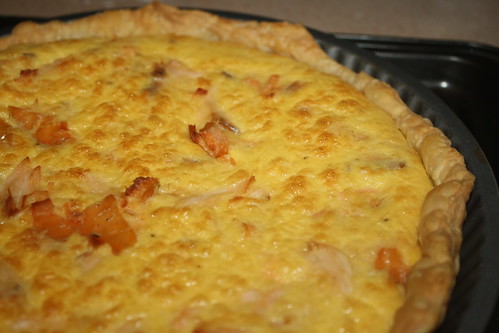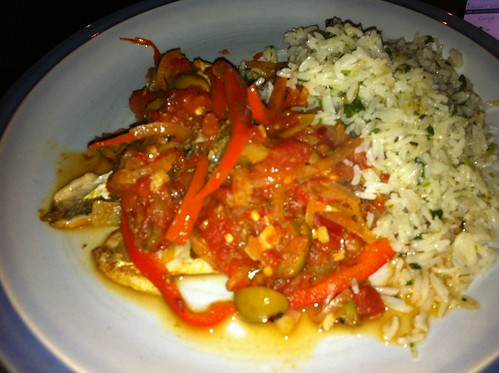This is a super easy tart recipe that can be on the table in about half an hour or so. It also makes use of hot smoked salmon – the type that you buy in a large chunk, not the fine slices. You could use any smoked fish, really. If you’re in the northern hemisphere smoked mackerel would work really well, particularly with the horseradish.
The original recipe comes from Woman and Home. It’s an English magazine (and one I confess I never read while I lived there) and the recipes usually look really good but are relatively little work.
When I made this tart I cheated and used some leftover (bought!) pastry that we had hanging around the fridge – you can probably tell from the photo that it was a combination of shortcrust and puff! Of course, you can make your own shortcrust, or perhaps even buy a ready made tart case. How much work you want to put in is your choice!
Remove the skin from the fish (if it’s still on) and flake the fish into the tart case. You want reasonably even sized pieces but don’t get too hung up about that. You definitely want an even covering of fish though!
For the filling, I used 1 egg yolk and 4 eggs, 1 generous tsp of horseradish and about 2 generous tbsp of cream. Whisk this all together and season with pepper (remember – no salt! Don’t add salt to uncooked eggs!). Gently pour over the fish and place the tart in an oven preheated to 170°C (fan, 190°C normal). Bake for about 30 minutes or until the filling is puffed, golden and firm to touch.
In summer, you could serve this tart at room temperature with a salad. However, as it’s decidedly not summer here, it was served on hot plates with steamed veggies.
Either way – perfect quick supper food!



